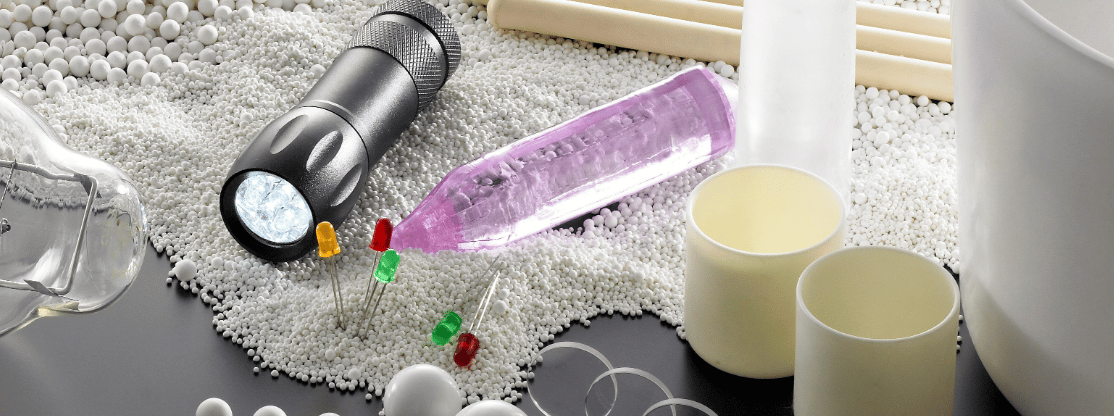- The Column
- Posts
- 🏭 Sumitomo is ultra-fine
🏭 Sumitomo is ultra-fine
Sumitomo's ultra-fine alumina for electronics and a bit about erasers.
TOGETHER WITH
Good morning. I asked the paid readers this last week, but I’m considering doing something a bit more exploratory with the newsletter—if I were to do a series on a new/expanding value chain, which would you be more interested in seeing first?
Which value chain do you want to explore first?(Please leave a comment!) |

Sumitomo’s plans for alumina are ultra-fine
Japan-based chemical company, Sumitomo Chemical, plans to start up its new ultra-fine aluminum oxide (alumina) plant in in Ehime, Japan sometime in September.
Setting the scene:
We talked about Sumitomo and aluminum oxide production just a couple of month ago: they are working with Rio Tinto on a hydrogen-fueled less energy intensive means of production. But, in case you missed it, we make aluminum by processing bauxite ore into aluminum oxide (aka alumina) via the Bayer process, and then we dissolve that alumina in molten sodium hexafluoroaluminate (aka cryolite) prior to electrolysis via the Hall–Héroult process. The last step in the Bayer process—calcination—is the notoriously energy intensive one (aluminum hydroxide is dehydrated to alumina by heating it to temperatures near 1100˚C).
Okay, so what is Sumitomo doing this time?
In the early 2000s Sumitomo developed a process that is the same at a high level, but differs at a more granular level (pun intended). The company can make non-aggregated ultra-fine alumina particles with 150 nanometer diameters, and those particles have found quite a few high-value applications, mostly in electronics (think LED substrates, semiconductor thermal materials, and advanced lithium-ion battery separators).
Tying it together:
Sumitomo has done what specialty chemical producers strive for: become the market leading producer of a chemical or material that is a critical input to a high-value output with a rapidly growing market. The company currently expects sales for their very special alumina to be 30% greater in 2025 than by what they do in sales this year, hence the plant expansion and imminent start up.
SPONSORED
Meet your low carbon market research tool
If you’ve ever sifted through an earnings presentation or transcript, you know how time consuming it can be to extract the meaningful data. And if you’ve ever needed to keep tabs on an entire industry, or do deep market research, then you know how it can quickly become an impossible task.
With Betamark, you can easily search through earnings presentations and calls from the Energy, Mining, Chemicals, and Materials sectors, and get the data you need at a glance—even pricing data for commodities and carbon!
Some more headlines
Sika got funding to try to recycle concrete
S-Oil's aromatics unit had to be shutdown because their reformer caught fire
LG Chem is investing $95 million to produce more reverse osmosis membranes
ICIS recorded a podcast about how the US ethylene glycol market is changing
The Chemical Safety Board is urging everyone to prepare for hurricanes
Product of The Day
Today, we're breaking down erasers.

Back in the late 18th century, a British engineer spending some time in South Africa made the world's first eraser out of natural rubber (aka latex, aka cis-polyisoprene). Legend has it that the man who discovered oxygen called it rubber because of its ability to rub pencil lead off of paper. By 1916 the folks at Eberhard Faber had launched the notorious Pink Pearl—made from natural rubber, sulphur, vegetable oil, and some reddish-pink pumice.
Today, the iconic pink eraser is made from a styrene butadiene copolymer we call styrene-butadiene rubber (SBR) and various other proprietary ingredients (perhaps a little pink dye?). The new eraser on the block, those better performing white ones, are made from a blend (prbably close to 50/50) of polyvinyl chloride (PVC) and plasticizers. We talked about Pentel's move to BASF's non-phthalate plasticizer not too long ago.
The reboiler
Podcast: Check out this episode featuring Dr. Tina Tosukhowong of PTT Global Chemical on her career and stance on sustainability.
Article: It’s hard to understand the petrochemical industry without knowing in's & out's of the 'enes.
Course: Want a complete overview of the major petrochemicals and how we make them? This will cover all the bases.*
The bottoms

Want to discuss this stuff with other readers? Join the Discord.
Interested in working for a startup? Join the talent pool.
Looking for older editions? Read the archive.
Curious about more than just news? Subscribe to Feedstockland.


Reply